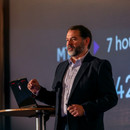What’s the Difference Between Observability and Monitoring?
Observability and monitoring are two sides of the same coin.
“Observability is a modern approach to monitoring that provides complete visibility across the full stack of network, infrastructure, applications and digital customer experience,” says Mary Lou Prevost, group vice president for state, local and higher education at Splunk.
In today’s complex IT environments, “traditional monitoring just doesn’t cut it anymore. Most monitoring tools weren’t built to handle the frequency of changes or the explosion of potential failure scenarios found with modern, cloud-native software,” she says.
Observability helps makes sense of the situation. “Monitoring tools get you a base level, and the observability adds the context that drives the needed action,” Kellen says.
RELATED: Modernize higher ed network infrastructure with a next-generation network assessment.
Why Observability Is the Right Next Step for Higher Education
Once the networks are well monitored, observability represents an important next step.
“If I have 250,000 devices on my network and they’re just MAC addresses and IP addresses, I’ve got monitoring, but I don’t necessarily know what I’m looking at,” Kellen says.
Observability tells you what’s actually going on.
“There’s this IP address going crazy. What is it? Oh, it’s the server in our engineering department or a server within an area of the cloud owned by this person,” Kellen adds. “Now, we have context for action.”
Beyond keeping systems humming along, institutions need observability to meet student expectations in an increasingly competitive higher education environment, says Gregg Ostrowski, executive CTO at Cisco AppDynamics.
“Today, everything is done online and electronically,” he says. Students register for courses and access academic materials online. They log in to access to a range of university services. “All of that has to be flawless.”













